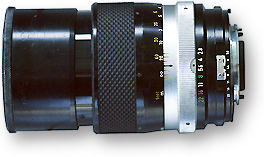David Mitchell
Well-Known Member
Hi all,
Just thought I would start this thread with regards to what lenses everyone is using, I seem to have started a small collection already of lenses ranging from a 44mm Helios M42 lens to a 300mm Tair lens lol I thought I would start this thread as I know there are a few pro photographers on here and indeed other rather clued up individuals who have a nice collection of lenses at home.
I thought that this would be a good thread to have a discussion around what lenses you normally use, for what photo opportunity and why you chose that lens. Simply due to the fact that someone might say: "I use this lens because xxxxxxx, its not a very common lens but its amazing" and there might be someone else on here who might not have heard of a certain lens that might be perfect for them.
I have just watched a youtube video about a semi pro photographer who has basically switched to vintage lenses on his DSLR on photo shoots as back in the 70s and 80s lenses were made properly and were made to last. These lenses can still be used fine on modern DSLRs (oh no! You can't use the auto setting!)
I was personally wondering if there are any lenses I should aim to perhaps get my hands on at some point, I have a crop sensor DSLR so I guess I need a 35mm lens to then own a '50mm prime' lens due to the crop. I might still change to a full frame at some point but I have a selection of 35mm SLRs now which I can use with what I deem 'proper' lenses that are fully manual and don't have any witchcraft inside them to move stuff electronically lol its the person behind the camera who is the most important, so I would want to be in control of everything in the image myself so manual is the way to go
its the person behind the camera who is the most important, so I would want to be in control of everything in the image myself so manual is the way to go 
Slight tangent there lol but back to the topic! What lenses do you own and why? Also are there any lenses that you have heard of that others may not have?
Just thought I would start this thread with regards to what lenses everyone is using, I seem to have started a small collection already of lenses ranging from a 44mm Helios M42 lens to a 300mm Tair lens lol I thought I would start this thread as I know there are a few pro photographers on here and indeed other rather clued up individuals who have a nice collection of lenses at home.
I thought that this would be a good thread to have a discussion around what lenses you normally use, for what photo opportunity and why you chose that lens. Simply due to the fact that someone might say: "I use this lens because xxxxxxx, its not a very common lens but its amazing" and there might be someone else on here who might not have heard of a certain lens that might be perfect for them.
I have just watched a youtube video about a semi pro photographer who has basically switched to vintage lenses on his DSLR on photo shoots as back in the 70s and 80s lenses were made properly and were made to last. These lenses can still be used fine on modern DSLRs (oh no! You can't use the auto setting!)
I was personally wondering if there are any lenses I should aim to perhaps get my hands on at some point, I have a crop sensor DSLR so I guess I need a 35mm lens to then own a '50mm prime' lens due to the crop. I might still change to a full frame at some point but I have a selection of 35mm SLRs now which I can use with what I deem 'proper' lenses that are fully manual and don't have any witchcraft inside them to move stuff electronically lol
Slight tangent there lol but back to the topic! What lenses do you own and why? Also are there any lenses that you have heard of that others may not have?

